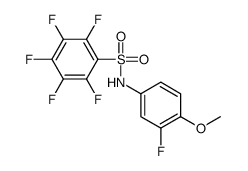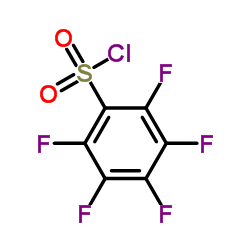| Description |
Batabulin (T138067) is an antitumor agent, which binds covalently and selectively to a subset of the β-tubulin isotypes, thereby disrupting microtubule polymerization. Batabulin affects cell morphology and leads to cell-cycle arrest ultimately induce apoptotic cell death. Batabulin has efficacy against multidrug-resistant (MDR) tumors[1].
|
| Related Catalog |
|
| Target |
β-tubulin[1]
|
| In Vitro |
Batabulin (T138067; 30-300 nM; 24 hours; MCF7 cells) treatment shows approximately 25-30% tetraploid (4n) DNA content in cells, indicating an arrest at the G2/M cell-cycle boundary[1]. Batabulin (T138067; 30-300 nM; 24-48 hours; MCF7 cells) treatment shows 25-30% apoptosis. After a 48-hr exposure to 100 nM Batabulin, approximately 50-80% of the cell population is undergoing apoptosis[1]. Batabulin (T138067) binds covalently and selectively to a subset of the β-tubulin isotypes, thereby disrupting microtubule polymerization. Covalent modification occurs at a conserved Cys-239 shared by the β1, β2, and β4 tubulin isotypes. Cells exposed to Batabulin become altered in shape, indicating a collapse of the cytoskeleton, and show an increase in chromosomal ploidy[1]. Cell Cycle Analysis[1] Cell Line: MCF7 cells Concentration: 30 nM, 100 nM and 300 nM Incubation Time: 24 hours Result: Showed an arrest at the G2/M cell-cycle boundary. Apoptosis Analysis[1] Cell Line: MCF7 cells Concentration: 30 nM, 100 nM and 300 nM Incubation Time: 24 hours or 48 hours Result: 25-30% of cells showed the reduced DNA content characteristic of apoptotic cells.
|
| In Vivo |
Batabulin (T138067; 40 mg/kg; intraperitoneal injection; once per week; on days 5, 12, and 19; male athymic nude mice) treatment impairs the growth of the drug-sensitive CCRF-CEM tumors[1]. Animal Model: Male athymic nude mice (nu/nu) (6-8 week-old, 20-25 g) injected withCCRF-CEM cells[1] Dosage: 40 mg/kg Administration: Intraperitoneal injection; once per week; on days 5, 12, and 19 Result: Impaired the growth of the drug-sensitive CCRF-CEM tumors.
|
| References |
[1]. Shan B, et al. Selective, covalent modification of beta-tubulin residue Cys-239 by T138067, an antitumor agent with in vivo efficacy against multidrug-resistant tumors. Proc Natl Acad Sci U S A. 1999 May 11;96(10):5686-91.
|


